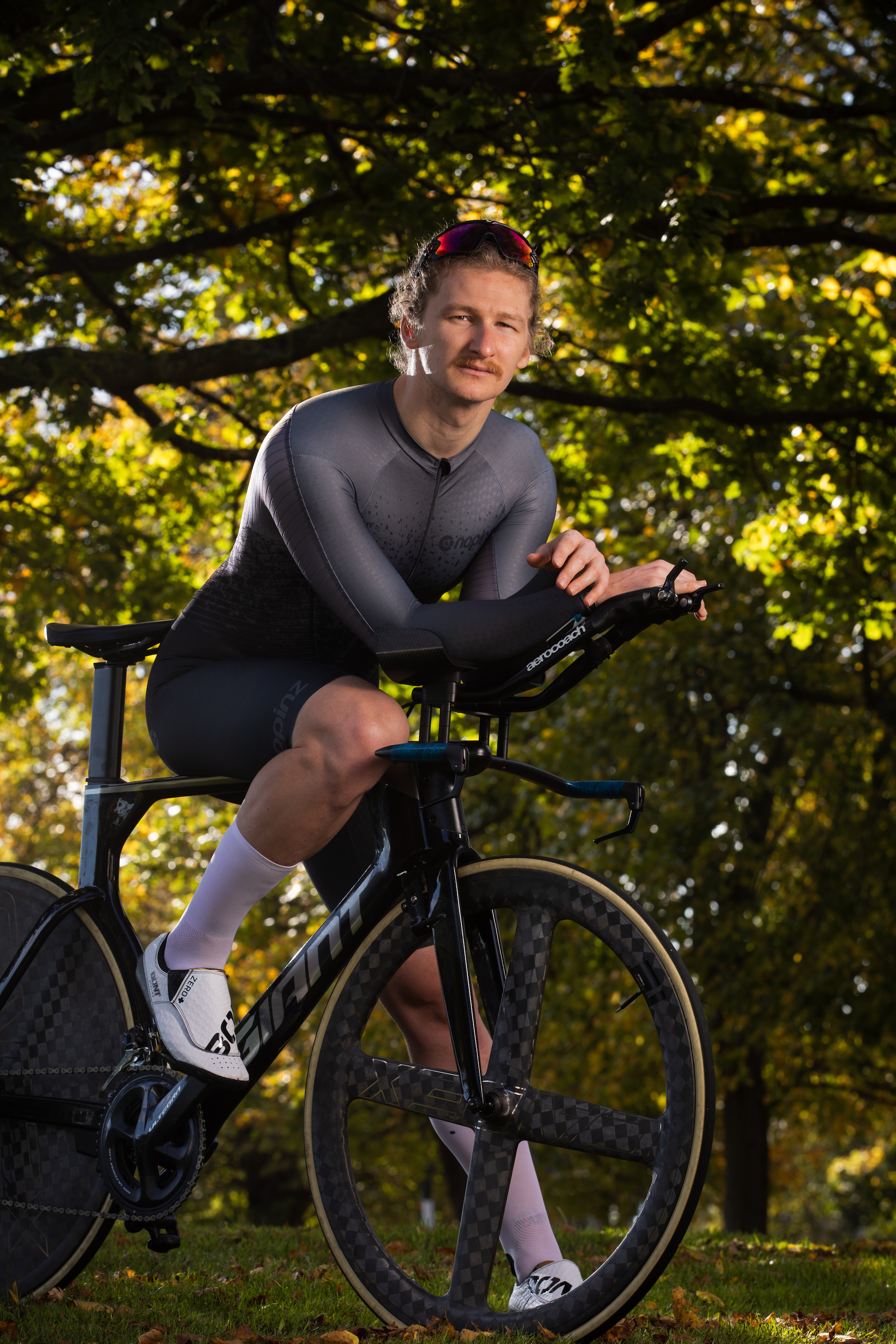Ribble Endurance SL R disc review
British bike brand Ribble continues to go from strength to strength, but how does its Endurance SL R model stack up against its competitors?
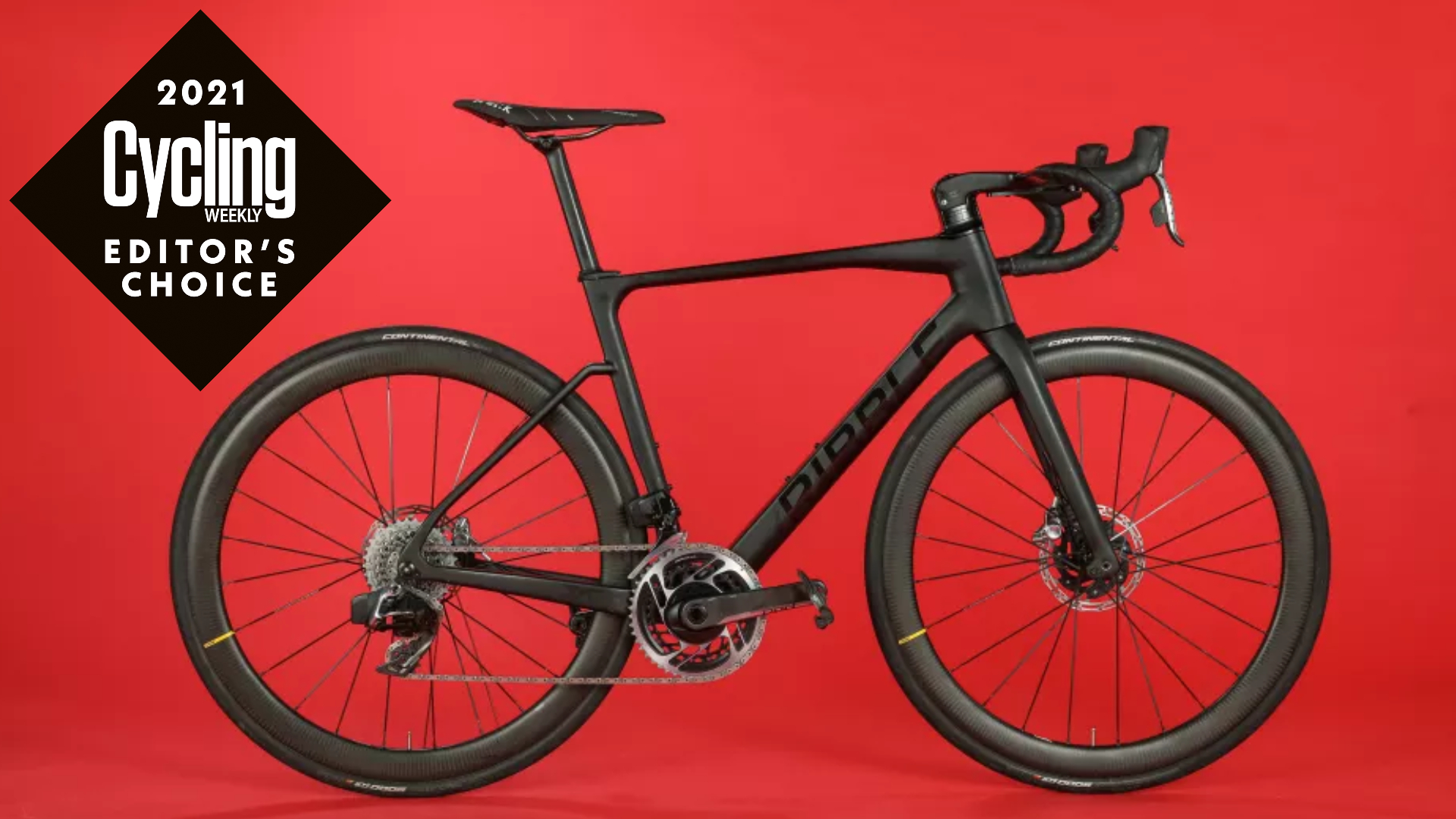
The Ribble Endurance SL R is a stylish bike with an excellent turn of pace, a mouth-watering spec for an impressive price. Whilst not carrying the promised aero uplift and detailed R&D behind the new Ultra, the SL R is rapid without being unconventional. Low weight hasn’t been prioritised, and as such, the Endurance SL R can suffer on some of the steepest climbs. Despite that, this bike represents phenomenal value for an outstanding race bike.
-
+
Sleek looking
-
+
Fast when up to speed
-
+
Fantastic spec for the price
-
-
On the heavier side
You can trust Cycling Weekly.

Ribble’s naming conventions can cause some confusion. Whilst ‘endurance’ is often a marker of a more relaxed fit, in the case of the Preston based brand, the Endurance bikes are race-ready road bikes. The Endurance SL R is the lighter of the siblings, the other half of the pair being the Endurance SL. For those after the ultimate in speed, the ‘Ultra’ is, according to Ribble, the ‘most aerodynamically advanced bike in the world’, a bold claim and one we’ve yet to verify (without a wind tunnel, it will be a tough job).
The Endurance SL R certainly impressed us, and in part due to the excellent value for money.
Ribble offers an in-depth customisation bike-builder, that lets you choose all the components and the colour. The version we tested came complete with the SRAM Red eTap AXS groupset, integrated Ribble Level 5 carbon integrated bar and stem, and the Mavic Cosmic Pro Carbon disc wheelset. This spec came in at £6,519, but there are options from £3,699/$4,939.19 (Shimano Ultegra mechanical) to £6,999 (Shimano Dura-Ace) or $6,317.89 (SRAM Force AXS). There’s no denying that this is excellent value for money vs the big brand competition.
Ribble Endurance SL R Disc: construction

Made from the same Toray T1000/T800 carbon fibre as the Endurance SL frameset, albeit with more of the T100 grade than the SL in order to reduce the weight, the frame weighs 890g. If this is a painted figure (and if not, black is always lightest), this is heavier than the likes of an S-Works Tarmac SL7, at 800g (painted), but lighter than the 10R models outside of the S-Works range (920g, painted, size 56).
Whilst the Ribble Ultra has clearly unseated the Endurance SL R as the aero bike of Ribble’s line-up, it contains some nods to drag reduction - Ribble claims a 28.5 percent drop in drag vs the outgoing model. However, we’ve got to question what this means about the efficiency of the outgoing version, as the SL R is noticeably more slender than modern all-out aero bikes. It sits comfortably in the 'all rounder' territory, which blends low weight with low CDA, think Canyon Ultimate and co.
Aero additions include the use of a truncated aerofoil shape at the downtube, seat tube and seatpost, optimised fork blades, and internal cable routing - in the case of this model, via a one piece cockpit. This does add a few maintenance headaches, so is an option to choose only if you’re happy to spean time (or money) when it comes to the likes of headset changes; but it does look slick.
The bottom bracket area is bulky, implying good power transfer, whilst dropped seatstays, the carbon seatpost and space for 30mm tyres (or 25mm with mudguards) imply compliance hasn’t been forgotten.
The latest race content, interviews, features, reviews and expert buying guides, direct to your inbox!
Ribble Endurance SL R Disc: geometry
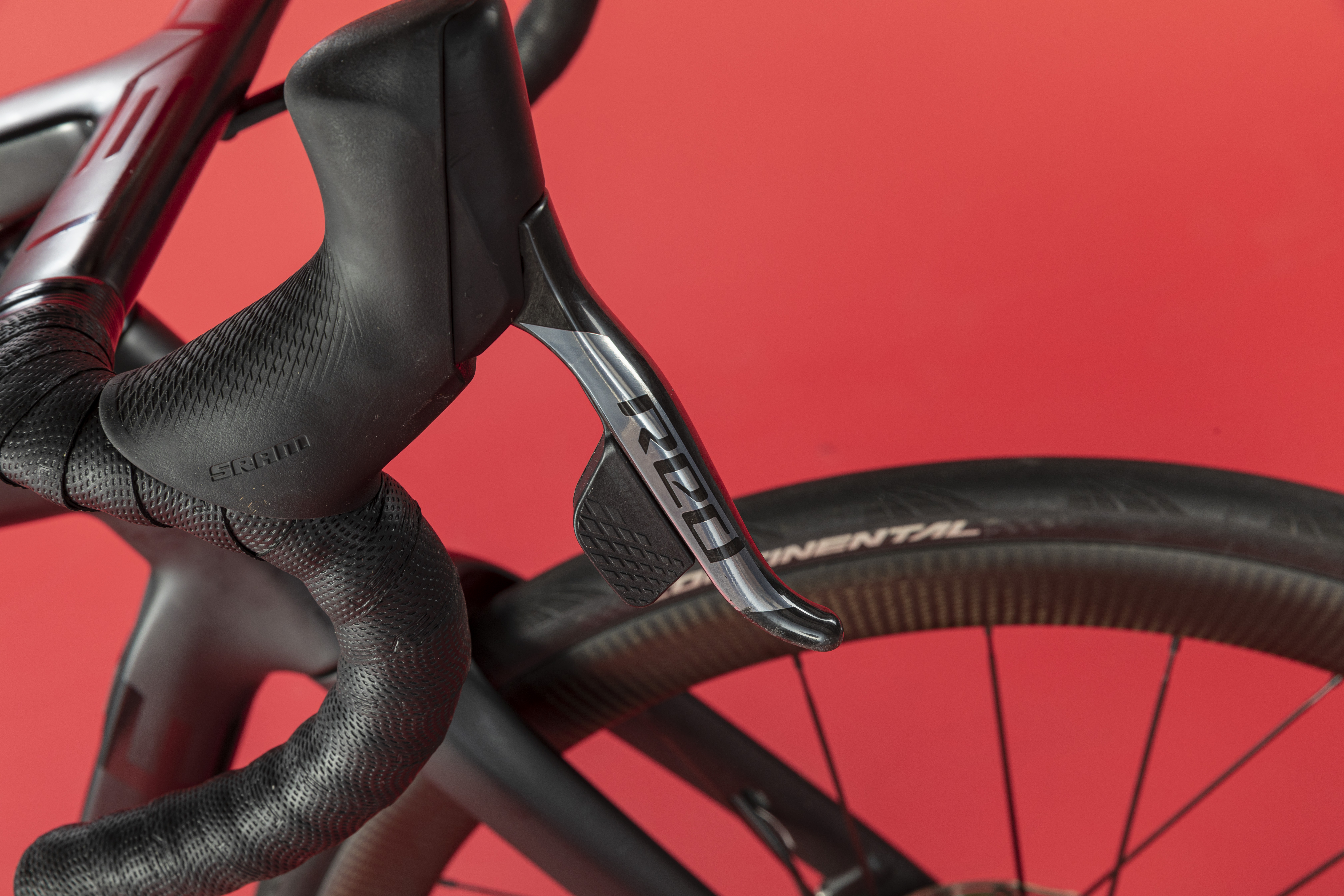
On the large frame, suited to people five foot 10 inches up to six-foot one, the SL R is essentially identical to the lower spec SL, with a 73-degree head angle, 73-degree seat angle and a 562mm stack, with a reach of 396mm. The only minor difference is the wheelbase, just 1mm shorter on the SL R at 999mm, compared with 1,000mm on the SL.
But it is marginally more aggressive than the more comfortable Canyon Ultimate, which runs with a 73.3-degree head tube angle and a 73.8 seat tube angle, with a taller stack of 567mm stack in the medium (Canyon sizes are slightly different), and a reach of 391mm.
Ribble Endurance SL R Disc: the build
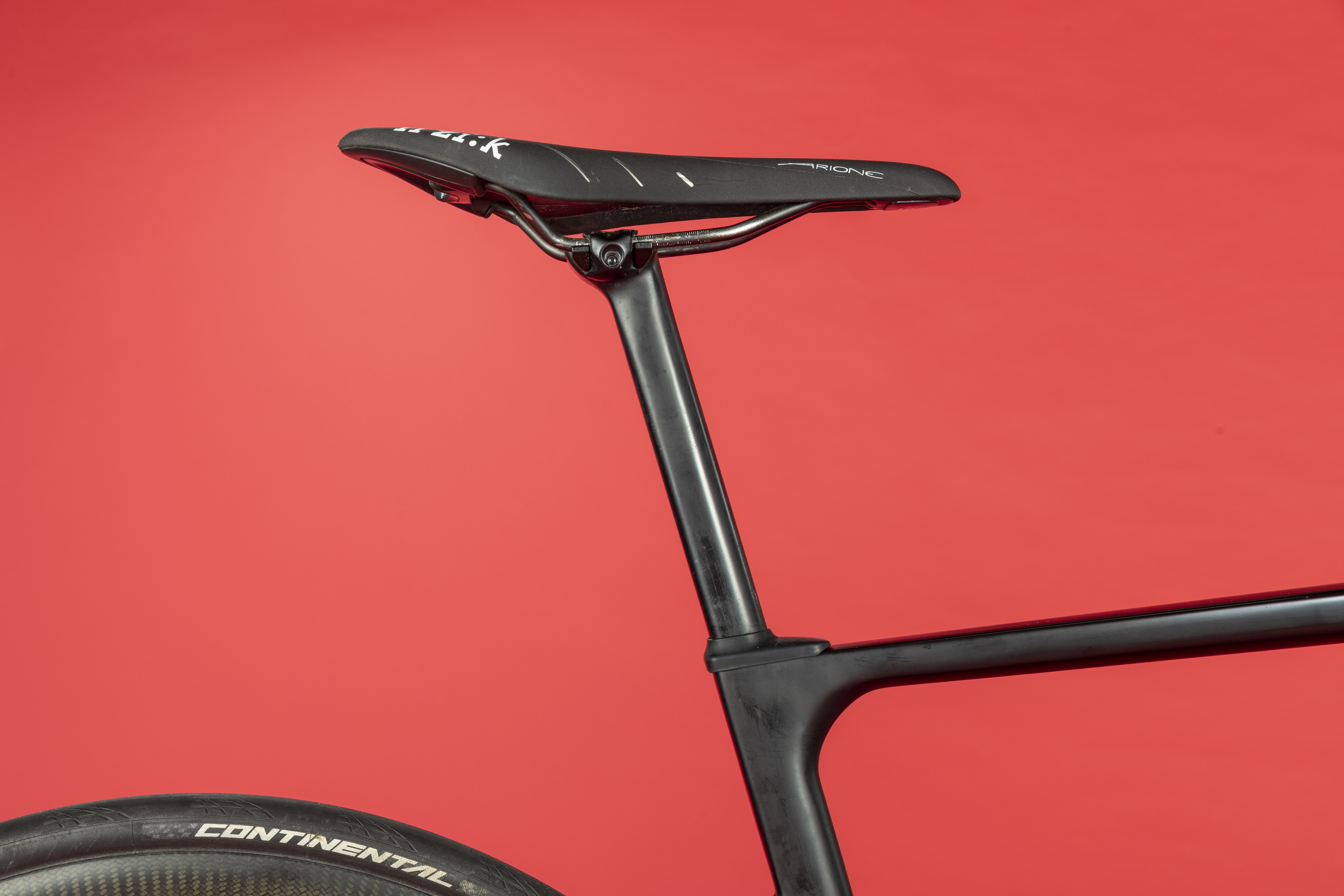
The spec on any complete bike is always down to personal preference, particularly with Ribble’s endless combinations via its bike-builder app, but as a time trialist by definition, the components on the SL R hit just the right spot.
Starting with the phenomenal, but very expensive, SRAM Red eTap AXS groupset, this is a set-up I’ve always been fond of having tested it on a number of other machines.
With the 12-speed 10-36 rear cassette and 43/40 2x system up front, the Endurance SL R gave a huge spread of gears, which suited my low-cadence style or riding, offering plenty of power on the flats and a nice easy gear when the roads turn upwards, helping me out on terrain that just isn’t my forte.
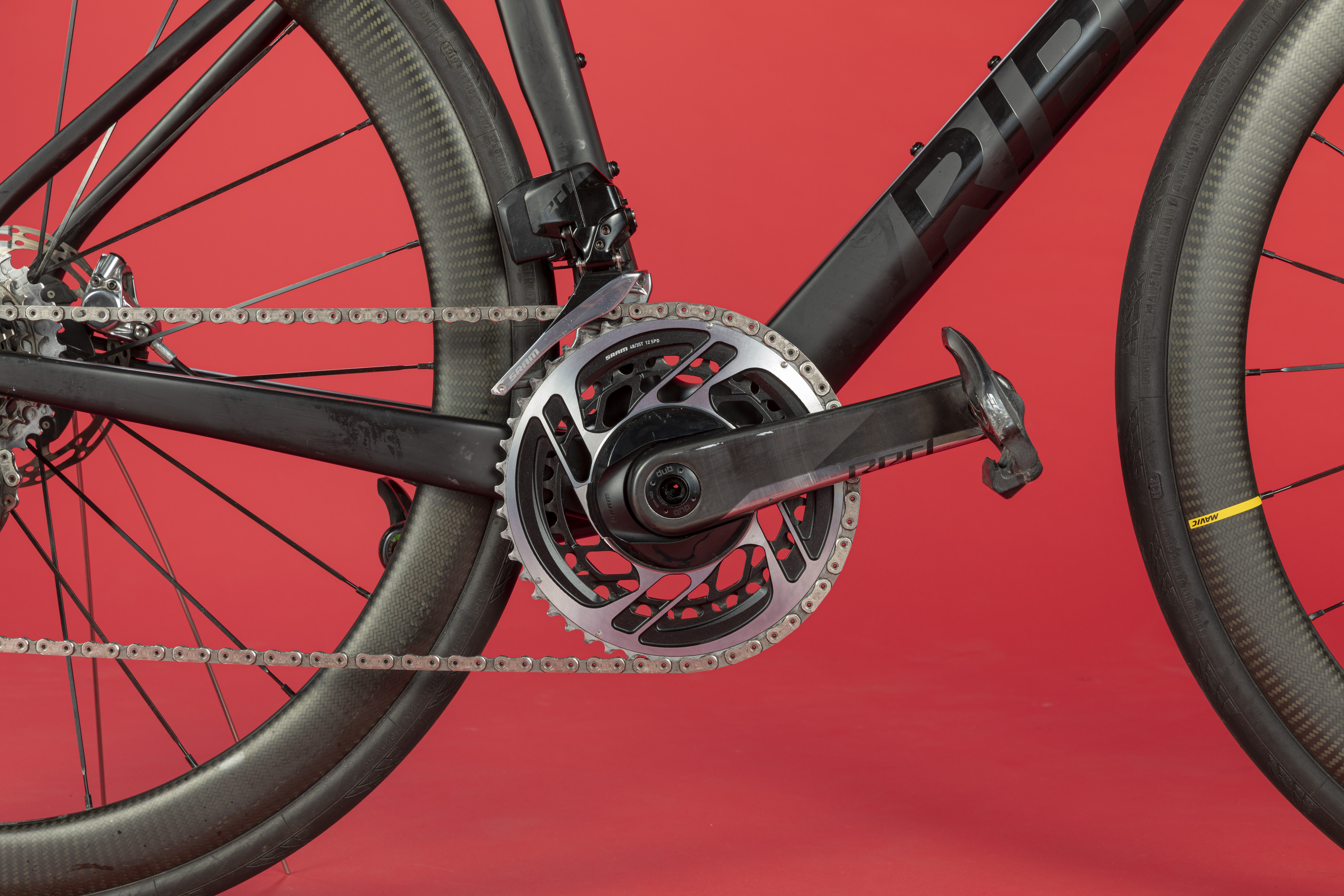
The benefits of SRAM 12-speed include a greater range of gears than the traditional 11-28 cassette and 53-36 front I would choose, and with less jump between gears in the middle of the block, this set-up is perfect for a grinder on the pedals rather than a spinner.
When it comes to the wheels, the 45mm rim profile on the Mavic Cosmic Carbon is optimised for 25mm tyres; these were the perfect mid-point between aerodynamics and control, adding to the versatility of the race-focused machine.
Deeper wheels add to the rigid feel of the Ribble, but the Mavic options is a compromise on weight, running at around 1500g for the pair, compared to 1,300g for a set of Zipp 45mm deep wheels (which are more expensive).
Ribble Endurance SL R Disc: the ride

Living in the traffic-riddled backdrop of South London - the capital’s answer to the Ardennes [keep telling yourself that, Alex! - Ed] - short, brutally steep climbs are the norm as I head out south on the bike into Kent.
For that reason, keeping the weight down is often essential to what I would consider a 'successful' ride, as you don’t want to be breaking the 500 watt marker early in the ride on the way to the route.
Unfortunately with the Ribble SL R this is often the position I found myself, as despite carrying a top spec groupset, this overall build weighs in at 7.6kg for the 54 size frame, a decent chunk heavier than rival all-round machines, like the Specialized Tarmac SL7 (around 6.7kg).
The extra weight isn't in the groupset, we know that, and the claimed frame weight is within range, so the extra grams must be embedded among other areas of the finishing kit.
That weight, which you noticed most in the front end, does compromise this bike’s effectiveness as a climbing race bike, as you wouldn’t want to go head-to-head on a steep climb with someone on a lighter machine than this in a race scenario.
However, I found that to be the only intrinsic downside to this bike, as when I finally hit the flats I found myself in my element with a machine perfectly suited to riding fast.
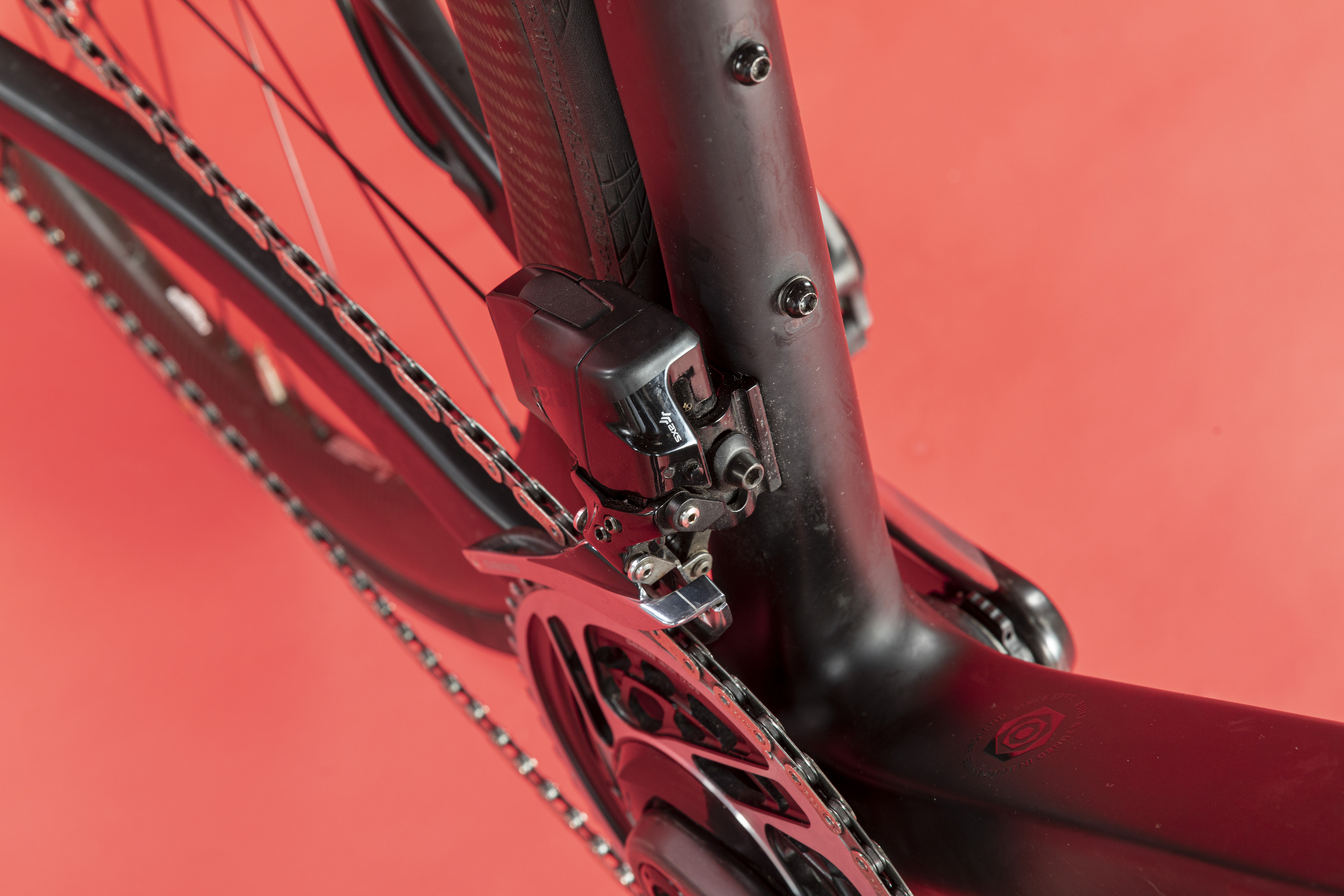
The rigid build, aero cockpit and deeper carbon wheels means this bike rolls at speed, I found I could be up to 30kph in no time. This was all complimented by the aforementioned SRAM 12-speed, which gives you plenty of gearing options in the middle of the block and lets you keep the power flowing with steady and smooth electronic shifting, making it a dream to get the head down and the power flowing on fast, flat roads or even the gradual climbs.
The heavier front end also offers phenomenal traction in the turns, combined with the Continental GP5000 28mm tyres, which for my money are the best all-round tyre available on the market right now.
Comparing this with other similar spec bikes, including the Canyon Ultimate with SRAM eTap AXS and even the sports-car-like Scott Foil Premium, this bike matches its rivals on pure speed, while the price makes it a serious contender in the all-round market - suddenly the weight doesn’t feel like such a drag.
Ribble Endurance SL R Disc: value and conclusions
Through all the talk of spec and ride, the most important thing for any non-professional rider always has to be the value, and this is where the Ribble thrives.
Coming with the top-end SRAM groupset, which retails for more than £3,000 on it’s own, the Mavic wheelset (£1,800) retail and an aero cockpit (£399.99 retail), this machine comes in at a staggeringly good value at £6,519.
Compare that with the newly released Specialized S-Works Tarmac SL7 with the same groupset, which is on the market for £11,750, or the Scott Foil Premium full-aero machine at £8,000 and suddenly the Ribble’s place in the market is clear - an all-round machine leaning towards a slightly more aero focus, that absolutely crushes many of its rivals on price.
The only true contender to this Ribble comes from Canyon's bike range; Canyon has also been leading the industry on high-spec, phenomenal value machines.
Canyon offer their Ultimate CF SLX 8 disc, complete with the slightly lower spec SRAM Force eTap AXS and the higher spec Zipp 404 Firecrest wheels for £6,499, making it a matter of preference between the two evenly matched machines.
But having ridden both the Canyon, the Ribble a handful of rival machines out on the market, I might be inclined to purchase the style, speed and British pedigree of the Ribble.
Alex Ballinger is editor of BikeBiz magazine, the leading publication for the UK cycle industry, and is the former digital news editor for CyclingWeekly.com. After gaining experience in local newsrooms, national newspapers and in digital journalism, Alex found his calling in cycling, first as a reporter, then as news editor responsible for Cycling Weekly's online news output, and now as the editor of BikeBiz. Since pro cycling first captured his heart during the 2010 Tour de France (specifically the Contador-Schleck battle) Alex covered three Tours de France, multiple editions of the Tour of Britain, and the World Championships, while both writing and video presenting for Cycling Weekly. He also specialises in fitness writing, often throwing himself into the deep end to help readers improve their own power numbers. Away from the desk, Alex can be found racing time trials, riding BMX and mountain bikes, or exploring off-road on his gravel bike. He’s also an avid gamer, and can usually be found buried in an eclectic selection of books.
